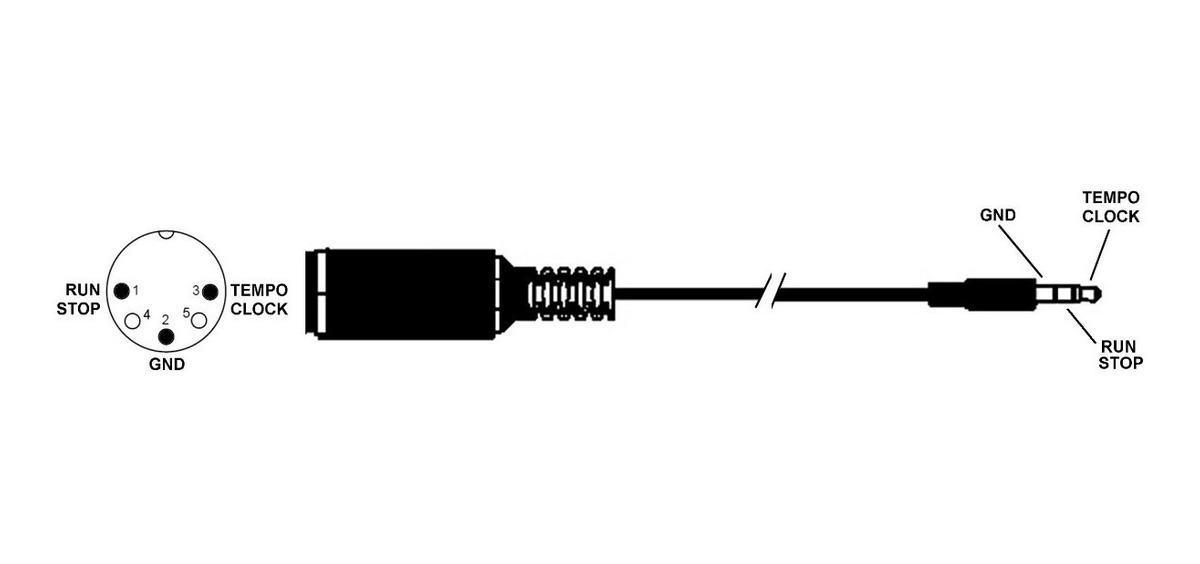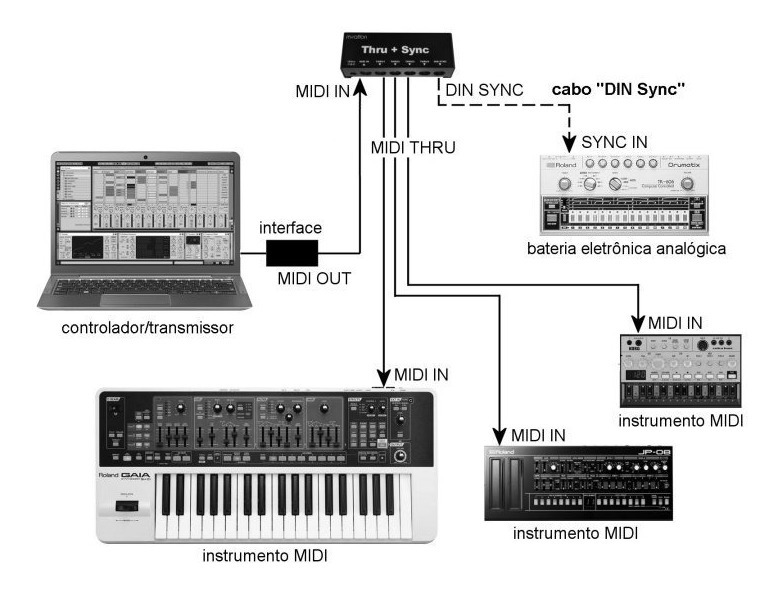-
Posts
37 -
Joined
-
Last visited
Content Type
Profiles
Forums
Downloads
Everything posted by Sol
-
I don't see where I can find in the edition, "samples as split"
-
How to place the recorded external samples from the microphone input to use along the Keyboard?
-
After configuring the recording of a sample through the microphone input, I can listen to the sound recorded at Play/Stop. When I write I can't find anything specific to which part of the equipment this sample should be, besides the obvious user sample. But how do I put this recorded sample of the mic to play it on the keyboard as a standard tone? Is the way to set external samples on the whole keyboard (on the five octaves as a common tone) different to set parts of the keyboard (split mode)?
-
Ok, I found the list inside OscBLock and I'll see what I can do with the presets since you can't generate without them...Its very frustrating not to be able to trigger an oscillator with a selectable wave from zero as in any synth. Here the process is the other way around: first a limited sample preset sound and then mix a wave.
-
Hi Jokeyman There are some Midi Hubs that come with Tru and Dyn-Sync outputs with a selector. The MIDI commands for synchronization (Start, Stop, Continue, Clocks) transmitted by the controller are then converted by Thru+Sync into synchronization pulses that are sent by the DIN SYNC output to the analog instrument to be synchronized. Depending on the Midi Hub model, the format of the synchronization pulses can be set to 1 ppq (adopted in some analog sequencers), 2 ppq (Korg Volca), 24 ppq (Roland TR, etc) or 48 ppq (Korg DDM, KPR, etc). On the final of this video (12min) he talk about this kind of Dyn-Sync output thats give a pulse to sistem:
-
I bought XWG1 a month ago, and in this time I tried to familiarize myself with the good sample, loop, phrase and sequencer functions. But when trying to create a sound from scratch through SoloSynth User, only the knobs work. I tried everything to use the sliders through the OscBlock, Envelope, Total Filter... no additive or subtractive synthesis... The manual only talks about how to edit the preset sounds... That's right, I can't create a monophonic timbre from scratch? I bought it knowing that it comes with more than a thousand waveforms. Where can I access them to work with sound design, without depending on the presets? I printed the PDF "Appendix" with a list of 765 synthesized waves. Where do I find them inside XW-G1 to work the sound?
-

Mike Martin's Live XW Clinics: Highly Recommended!
Sol replied to AlenK's topic in General XW Series Discussion
And about MZX I think that its battery to design pattern sequences and produce 8 MIDI channels, from its 5pinMIDIdin socket, makes it quite versatile to command all devices in play (synth, drumachines, etc), although the PXS5 has its value as a mixer. Zaytrius, in the topic "Casio Privia PX-5S, how to use a midi controller for my external synths?" showed that it was necessary to include a Keystep Controller between Privia and the brain of his Set in the Midi chain, probably because PXS5 is not enough to handle Elektron Digitakt. -

Is there a way to make your own PCM tones
Sol replied to Sean777's topic in General XW Series Discussion
This is the problem, we players are the ones who pay for the projects of the companies, so they should expand their efforts to respond to the Royal Demand of those who bankroll, rather than looking at their navels with particular projects. It seems there's more vanity among engineers than "market concerns" - and I'm not talking about the Casio here, but about the whole industry. As much as the industry wants to invent fashion, it's ultimately the consumer who bankrolls the materialization of their projects. Not listening to the consumer is disrespectful and less cost-effective. Many companies in other areas find it quite obvious! If innovation is difficult, keep efforts in reflecting on unification so we already have: Midi hardware with flexibility of use of sounds in.wav -PADRONS of industry... The more fragmented the more we are part of the problems, not intelligent solutions. Perhaps the real challenge in the world of digital production has never been a matter of software (we have enough of that), but integration of devices... As always! The company that opens its eyes to building "free operating systems" to integrate part of its equipment, even to be bought together, will win in the innovation race and increase its profits. Now, to focus only on locked software, and not on new types of drivers open to communication with what has been the pattern for decades, is to remain slave to ready things: there is nothing innovative in increasing its exponential. And speaking of research, justice be done: my Casio XW-G1 is a pearl of great resources. It was the best sampler that Casio has done since the SK2100 (is more like an Fz1), and a rare everything in a flexible. I wouldn't trade him for Roland JDXi. Congratulations to the engineers at Casio. I have my criticisms as well as anyone who knows the history of this type of equipment, and I sincerely hope that experts will take the race more and more seriously for a more synthetic resource technology within the immense history of musical hardware. We're in the information age, we can't justify our mistakes, we're open to improvements all the time if we don't want to be swallowed up by the company that does the right thing first. The word "Originality" comes from "Origins". So let's not be slaves to fresh-made things. History is full of good ideas that cannot always be so subordinate to the so-called'new'. Speaking of studying, researching, and "information age", a good review of samplers is here: https://www.soundonsound.com/techniques/lost-art-sampling-part-1 Nice journey! -

Is there a way to make your own PCM tones
Sol replied to Sean777's topic in General XW Series Discussion
The history of the Musical Instrument Digital Interface implementation makes me believe that the unification effort is very intelligent and always good for everyone. Several computers with different chipsets can run different operating systems, and these can run softwares from different companies. From the programming point of view, it's perfectly possible to create a Software Editor or Sampler Editor to run on different keyboards of the same company. Perhaps the predefined pure PCM sounds of Casio's simple keyboards - sounds that even have the same names as those found in the some of predefined PCM sounds in the XWs - could fill a XW PCM user space, since they are just instrument digital samples and not edited in a complex way from one hardware to another. In this case, it would be more honest import than recording them and cutting them in an Audacity in Wav, to then go through the specific Software Editor, to then use in a non PCM region... Anyway, if Casio understands that for importing sounds in G1 it's enough to put everything in the small space (that already has its own niche), reducing the capacity of a specific software model to edit only external files for the ZWT format, then at least implement a space equivalent to the demand it will have to support. One solution has been in place for some time... using .wav for sample files, such as the Roland EA7 arranger, Korg Kross, etc - in them we can import any .wav in the way we have created or downloaded them. So the 32Gb of the SD card would make sense in XWs... instead of 65,000 ZTN ZTW ETC Capacity, a reasonable amount of .wav would be more versatile and sufficient than all this in fragmented formats for each software of each specific equipment to work with. If you buy an old Sampler and place a floppy disk emulator, it also solves the capacity problem. It doesn't take such a big effort for companies to help us be satisfied with a specialized sample keyboard like the G1 to make it effectively versatile. The industry already has a lot of experience in creating up-to-date equipment that embraces what has already been learned from the issue of storing and using samples flexibly on keyboards for these purposes. i hope you understand that every criticism can be a pearl to advance in the market through the complaints and ideas of its users, who basically only want the best for everyone. the companies that listen more that justify, advance more. And Casio usually listens to his clients as few companies do. -
Yeah, they're all talking about wave sounds of what can be sampled... They didn't answer Arioman when he asked: "so i only have 10 spaces for samples? there is no way to make a .ZTN from another file?" Shouldn't ZTN files be able to be placed within the 100 PCM Melody Users available in XW-G1 for our "use"? Why we can't use "the maximum memory in the XW-G1"? Its not possible convert ZTN files? We can edit and share ZTN files in the forum but the Editor only allows converting to ZWT? I don't understand why we have to sacrifice the small wave-sample space for PCM if there is already user space dedicated to them - ZTN files should go to PCM Users. By logic we should use the ZWT outside the PCM Casio tones field, for creation purposes with microphones and instruments (inputs) - for external samplers, not Casio's PCM. A CTK 4400 has 600 default sounds, many of them already in dual-layer, but in a production equipment like an XW-G1 We can't save a Layered PCM where we could save it, which is already much harder to do than a simple CTK that haves a layer button. The XW-G1 is a very noble equipment, it comes with very nice features, but it's not as practical and versatile as I expected from my previous experiences with other good Casio's. It deserved a firmware update. At least the Software Editor needs updates... See how much the search for a BassStation2 increased when, years later, Novation updated its firmware. Updating firmware is much profitable for businesses than launching other hardware...
-
- 3 comments
-
- Brass Swell
- Brass SFZ
-
(and 2 more)
Tagged with:
-
At least it fits in XW-G1?
-

Is there a way to make your own PCM tones
Sol replied to Sean777's topic in General XW Series Discussion
I bought an XW-G1 this month and in the product specifications there is the possibility to include 100 melody tones from PCM users. Incredible that not even the 100 extra PCM preset tones coming in P1 could not be imported to G1. Every player has .wav sounds to include in keyboards like this (samplers). And in XW, besides not supporting .wav, can not convert to .ZTN, as the costume says? I have to sacrifice the already restricted memory of the Sampler Users if I want to include sounds (recording directly by the instrument input), instead of the memory that should be used for PCM sounds not even if it's those of another keyboard of the same Casio? Are all files (ZSY, ZPF, ZWT, ZSS, etc) used in Editor Software - that many users share here normally - forever limited to the internal parameters of each instrument of the same company? This way it's not worth having a CTK5000 together with XW to receive an easy configuration as Dual-Layer of CTK, which is much more bureaucratic to do in an XW. I'm enjoying many things of the XW-G1, but we expect more practical and versatile equipment to combine in the 21st century. -

Mike Martin's Live XW Clinics: Highly Recommended!
Sol replied to AlenK's topic in General XW Series Discussion
Yes, as I always see many videos and people showing how versatile the XW-P1 is in this sense, but nothing demonstrating the XW-G1 as a Midi Master. I'm not sure about the Midi power of XwG1, and I'd even like my experienced colleagues to enlighten me if they know anything about its Clock, how many pulses per quarter (ppq) we're talking about when it comes to the control power of the XW Sequencers, and its power of synchronization, so that the slaves are obedient to the rhythm established by the master, to avoid echoes and musical derangements. In fact, I would just like to use a Behringer Pro1 Clone + Rolnad SE02 rack as Slaves to the XwG1 through a Midi Hub Thru box. In P1 it's easy to understand how Sliders can integrate them as in a Mix, since you have one Synthesis Engine Level Line and another Layer Level Line in your Hardware distribution. Although it seems that P1 is limited to one MIDI channel in all four zones, can control your internal sounds and mix them with the Slaves sounds on midichain: In G1 configurations we have Modulations and LFO for sliders behavior. I don't know if I can use K Knobs, or even split the keyboard, if I want to control and mix the Slaves by G1 as easily as in P1 - which can trigger the slaves' sounds in layers controlled with faders by default. I just want to use my G1 like Martin Horn did on his P1 in this video. The objetive question: how can G1 communicate these kind of midi parameters if it has no layer functions on sliders? https://www.youtube.com/watch?v=PLKbCdE4Jic#t=21m59s Korakios gave us a hint in Topic "How to use XW-G1 Sliders & Knobs as Software Controllers in DAW Virtual Instruments???" Among his tips, I just wouldn't turn off the Local, so I could mix the G1 sounds with the midi slaves through the sliders, as shown in Martin Horn's video with his P1? Will it work? If so, I'll buy the Synth-Racks, with XWG1 commanding them. -
To fix the file extension, just rename it and it will work normally?
-
-
Very grateful. Just two more questions: 1. Where can I find these P1 sounds whose downloads are broken in the Blog? https://xwsynth.wordpress.com/category/xw-synths/xw-g1/downloads-xw-g1/ 2. I saw in one of the forum posts a link with some factory settings, but only WaveData - user samples in the u200-u210 range. But the G1 I bought came with the u000 of SoloSynth empty. From what I saw in an official video from Casio about the use of the Editor Software it's called "SyncOsc Lead". Would you have any link from the SoloSynth bank factory files to rescue it?
-

Mike Martin's Live XW Clinics: Highly Recommended!
Sol replied to AlenK's topic in General XW Series Discussion
. -

Mike Martin's Live XW Clinics: Highly Recommended!
Sol replied to AlenK's topic in General XW Series Discussion
Yes,"fits in perfectly with other instruments". I wonder if he would do better than the PX5S or MZ-X500 as a Master of a Midi Chain to control other external hardwares such as the main keyboard. -
Very cool! I've had a set very similar to this one of yours. I sold Minilogue and Volca, but I still have the Yamaha MG12 mixer, Roland TR, several pedals (besides Flashback Delay) and a Midi Solutions Midi Combo. I made the investment in XW-G1 looking to use it within a midi chain, initially as the Master to control Behringer Pro1 and Roland SE Racks - I will still buy these ones. But from what I've seen the PX-5S has even better parameters than the XW-P1 for midi hardware control itself - it seems that P1 is limited to one MIDI channel in all four zones... I'll still test my G1 even when the Racks arrive. Until then I have a lot to study behind the ppq (pulse per quarter) of his sequencer, and the sampler user - my XW-G1 seems to serve more as a kind of your Elektron in the chain than a Master... As the G1 is a synthesizer groove, I want to believe i can do the times of Privia, Arturia and Elektron of your set, though with much loss of the Digitakt as a router that has many advanced capabilities. Great topic! PS: Zaytrius, What did you miss about PX5S to put another controller (Keystep) right at the start? Have you been using Privia's sliders to control all Slaves, or are you doing everything for the Yamaha mixer?
-

XW-P1 vs. Behringer model D or Pro-1
Sol replied to Jokeyman123's topic in General XW Series Discussion
Hello everyone! I bought this year an XW-G1, after selling a Minilogue and a Behriger Model D. Yes, I went through financial problems and had to sell both, and now decided to take the G1 as compensation for the huge loss. If I can hope that G1 will be as good in the Clock as it looks in its arpejeador, and can give some MIDI CC/ SYSEX control to be the Master to control a Behringer Pro1 Clone, I will have made a good trade. But i have many doubts about the Midi power of the XwG1, and I would like the experienced colleagues to enlighten me if they know something about your Clock, how many Pulses Per Quarter we are talking about when it comes to the power of control of the XW's Sequencers, etc. Instead of the Model D Clone, today I preferred a Pro1, that has a paraphonic option, and a Roland SE - that can save patches and get close to the Minimoog. And if I can put them in a Midi Chain whose controller is the five octaves XwG1, with the Slave Racks emitting their own potentials, I will have made a big upgrade... It seems that P1 can do it. But the G1 have different sliders parameters to give a mixer midi control. https://www.youtube.com/watch?v=PLKbCdE4Jic#t=19m26s https://www.youtube.com/watch?v=PLKbCdE4Jic#t=21m59s


